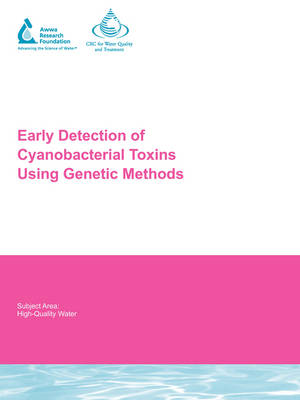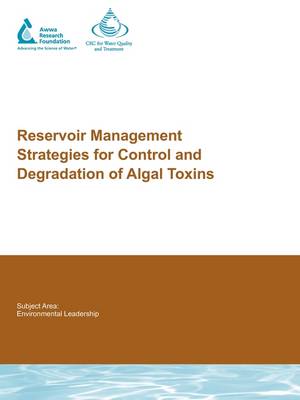Water Research Foundation Report
3 total works
Determination and Significance of Emerging Algal Toxins (Cyanotoxins)
by B. Nicholson, Paul Monis, B. Davis, I. Stewart, J. Papageorgiou, Andrew Humpage, D. Steffensen, and T. Linke
Published 31 August 2007
Cyanobacterial blooms have a long history and are widely recognized as sources of taste and odors in water supplies. There is an increasing concern for health effects in consumers with the identification of a number of toxic cyanobacterial metabolites. Cyanobacteria produce a range of toxins including peptide hepatotoxins (microcystins), neurotoxins (anatoxins and saxitoxins), cylindrospermopsin, and the lipopolysaccharide (LPS) endotoxins.
Robust analytical methods must be available to monitor for toxins and assess their significance. An evaluation of isolated LPS endotoxins determined their toxicities to be very low. Methods were further developed for the determination of saxitoxins, anatoxin-a, and cylindrospermopsin. This included their determination in a single method. The neuroblastoma assay detected saxitoxins not determined by other methods. Gene probes for the detection of toxic cyanobacteria were applied to a number of field samples. Enzyme-linked immunosorbent assay (ELISA) methods, including commercially available test kits, were evaluated for determining microcystins with good results.
A range of U.S. and Australian field samples were successfully analyzed using the above methods. Extraction methods for LPS endotoxins from cyanobacterial material were developed. Extracted LPS were then tested using temperature changes in injected mice. Deficiencies in existing analytical methods for specific toxins were used as the basis for selecting methods for further development. Kits based on ELISA procedures for determining microcystins have recently become available. Therefore, these were chosen for evaluation due to their simplicity and ease of use. The usefulness of the various methods was assessed by applying to them to a range of field samples.
Robust analytical methods must be available to monitor for toxins and assess their significance. An evaluation of isolated LPS endotoxins determined their toxicities to be very low. Methods were further developed for the determination of saxitoxins, anatoxin-a, and cylindrospermopsin. This included their determination in a single method. The neuroblastoma assay detected saxitoxins not determined by other methods. Gene probes for the detection of toxic cyanobacteria were applied to a number of field samples. Enzyme-linked immunosorbent assay (ELISA) methods, including commercially available test kits, were evaluated for determining microcystins with good results.
A range of U.S. and Australian field samples were successfully analyzed using the above methods. Extraction methods for LPS endotoxins from cyanobacterial material were developed. Extracted LPS were then tested using temperature changes in injected mice. Deficiencies in existing analytical methods for specific toxins were used as the basis for selecting methods for further development. Kits based on ELISA procedures for determining microcystins have recently become available. Therefore, these were chosen for evaluation due to their simplicity and ease of use. The usefulness of the various methods was assessed by applying to them to a range of field samples.
Early Detection of Cyanobacterial Toxins Using Genetic Methods
by J. Rasmussen, Paul Monis, and Chris Saint
Published 1 June 2008
Toxic cyanobacteria are typically monitored using two basic measures, cell counts and toxicity, each of which is moderately costly, highly operator dependent, and has a slow turn-around time. Rapid genetic detection of these cyanobacteria has the potential to be both faster and cheaper and provide information that complements these existing approaches. The genes that are responsible for the production of cyanotoxins can be used to design probes that will detect toxic species.
This research sought to develop and test rapid genetic methods to identify toxic cyanobacteria. The key objectives were to (1) conduct a literature review and industry questionnaire examining options for rapid genetic tests; (2) characterize and understand the genes involved in cylindrospermopsin and anatoxin production; (3) adapt conventional PCR assays to real-time PCR; (4) develop rapid field methods for DNA preparation; and (5) develop probes for toxin genes and testing in the field. A comprehensive literature review and industry questionnaire were used to identify and select a suitable platform technology for rapid genetic identification of toxic cyanobacteria. The genes responsible for production of the cyanotoxins, cylindrospermopsin and anatoxin, were identified and characterized using typical molecular techniques including DNA amplification, cloning, and sequencing. The putative role of the genes was established using bioinformatics. Conventional PCR assays for the putative cylindrospermopsin toxin genes were adapted to real-time PCR by designing a gene probe for the PCR product and then optimizing the reaction. A simple field method for the extraction of cyanobacterial DNA was devised and tested after a review of relevant research. The combination of rapid extraction and real-time PCR was used to identify toxic cyanobacteria in the laboratory and field.
This research sought to develop and test rapid genetic methods to identify toxic cyanobacteria. The key objectives were to (1) conduct a literature review and industry questionnaire examining options for rapid genetic tests; (2) characterize and understand the genes involved in cylindrospermopsin and anatoxin production; (3) adapt conventional PCR assays to real-time PCR; (4) develop rapid field methods for DNA preparation; and (5) develop probes for toxin genes and testing in the field. A comprehensive literature review and industry questionnaire were used to identify and select a suitable platform technology for rapid genetic identification of toxic cyanobacteria. The genes responsible for production of the cyanotoxins, cylindrospermopsin and anatoxin, were identified and characterized using typical molecular techniques including DNA amplification, cloning, and sequencing. The putative role of the genes was established using bioinformatics. Conventional PCR assays for the putative cylindrospermopsin toxin genes were adapted to real-time PCR by designing a gene probe for the PCR product and then optimizing the reaction. A simple field method for the extraction of cyanobacterial DNA was devised and tested after a review of relevant research. The combination of rapid extraction and real-time PCR was used to identify toxic cyanobacteria in the laboratory and field.
Reservoir Management Strategies for Control and Degradation of Algal Toxins
by Justin D. Brookes, Robert Daly, Rudi H. Regel, Michael Burch, Lionel Ho, Gayle Newcombe, Chris Saint, and Daniel Hoefel
Published 14 October 2008
The water industry has been actively seeking methods to control cyanobacteria. However, controlling them to a level that ensures no taste-and-odor problems is difficult. Even low numbers of cyanobacteria can produce concentrations of compounds that cause tastes and odors that attract customer complaints. The most sustainable long-term solution for reducing toxins, tastes, and odors is to control cyanobacterial growth through mixing and a reduction in nutrient levels.
The goals of this project were to investigate cyanobacterial toxin degradation in reservoirs, identify toxin-degrading organisms, and develop reservoir management approaches for the control of toxin production. Biodegradation studies were undertaken on two cyanobacterial toxins, cylindrospermopsin and microcystin. These studies consisted of spiking natural waters with known concentrations of toxin and measuring toxin degradation through time. Sand column biofilters were also spiked with microcystin and the evolution of a microbial community able to degrade the toxins was examined. The microbial community was screened, using molecular techniques, for organisms capable of degrading toxins.
The goals of this project were to investigate cyanobacterial toxin degradation in reservoirs, identify toxin-degrading organisms, and develop reservoir management approaches for the control of toxin production. Biodegradation studies were undertaken on two cyanobacterial toxins, cylindrospermopsin and microcystin. These studies consisted of spiking natural waters with known concentrations of toxin and measuring toxin degradation through time. Sand column biofilters were also spiked with microcystin and the evolution of a microbial community able to degrade the toxins was examined. The microbial community was screened, using molecular techniques, for organisms capable of degrading toxins.


